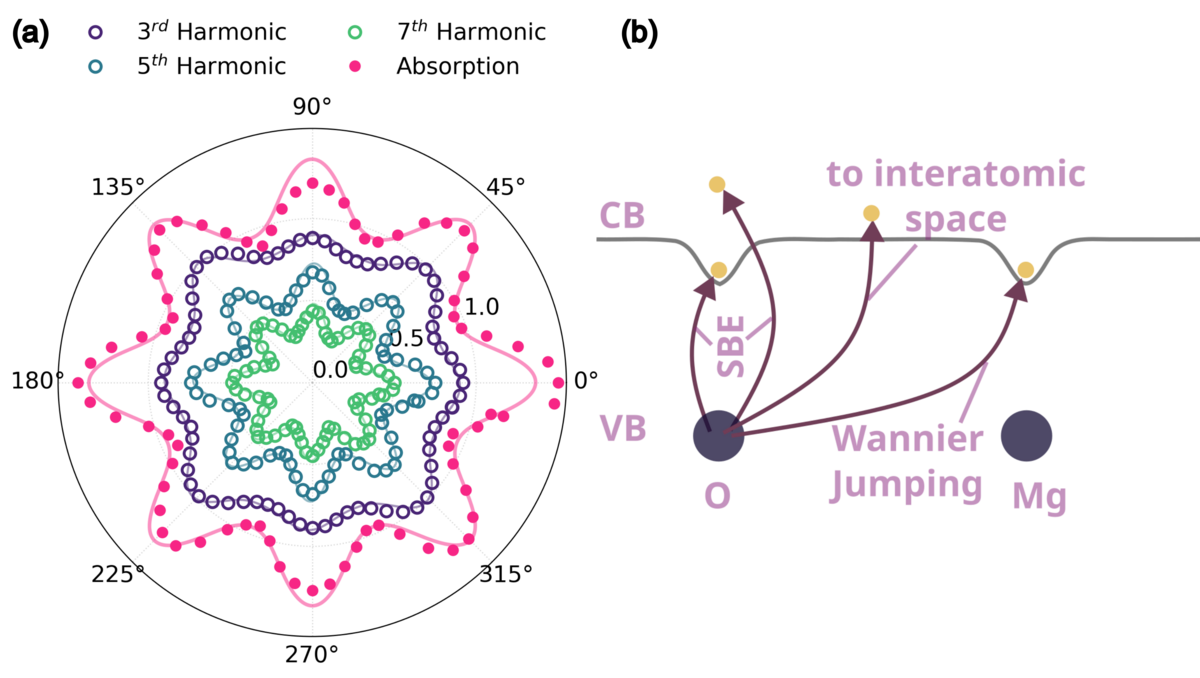Despite remarkable progress, fully understanding the microscopic processes involved remains a challenge. In a collaborative effort between the Max Born Institute (MBI) and the Advanced Research Center for Nanolithography (ARCNL) in Amsterdam, scientists investigated the interplay between high-harmonic generation and laser-induced photoexcitation in solids, shedding new light on ultrafast electron dynamics and microscopic HHG mechanisms.
HHG occurs when intense laser pulses interact with solid or gaseous targets, producing new frequencies — odd multiples of the fundamental frequency — with much shorter wavelengths. At the same time, electrons may be energetically promoted from their ground state to excited states resulting in a transient alteration of the materials’s optical properties. The recent study, published in ACS Photonics, explored the relationship between laser-driven excitation and high-harmonic emission from crystalline solids.
In crystalline materials, atoms arrange periodically, forming a crystal lattice. When subjected to intense laser fields, initially bound electrons may be energetically excited from the valence band to previously unoccupied conduction band states. Subsequently, they are accelerated within the energy bands that are dictated by the lattice arrangement. After acquiring kinetic energy, the electrons may recollide with their parent ion, releasing the gained energy in the form of high energy photons. In solids, all three processes (excitation, acceleration and recollision) lead to the emergence of a nonlinear current, resulting in the emission of odd harmonics of the fundamental laser frequency.
Experimental investigations by P. Jürgens et al. compared the strength of emitted high harmonics at different crystal orientation angles to nonlinear losses of the laser beam. They found that both losses and harmonic yields peaked when the laser's linear polarization aligned with high symmetry directions of the crystal lattice — highlighting a direct correlation between laser-driven electron excitation and high-harmonic emission.
Numerical simulations based on semiconductor Bloch equations, complemented by analytical calculations of orientation-dependent excitation rates, reproduced key experimental features. It was revealed that below-bandgap harmonics could arise from nonlinear currents associated with excitation or intraband acceleration, challenging the widely held belief that intraband currents associated with the anharmonicity of the energy bands dominate below-bandgap HHG.
This methodology offers a way to investigate the correlation between laser photoexcitation and high-harmonic generation in materials with internal symmetry, including 2D or thin-film materials with applications in semiconductor technology and optoelectronics.


